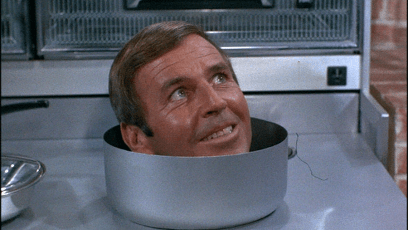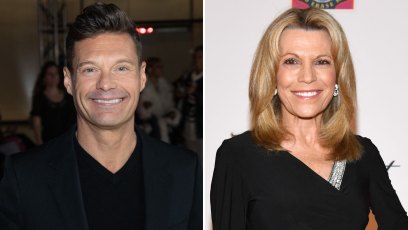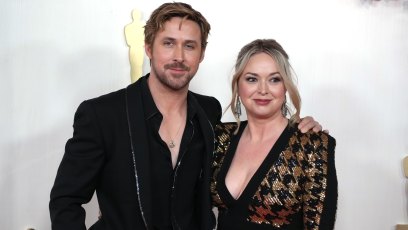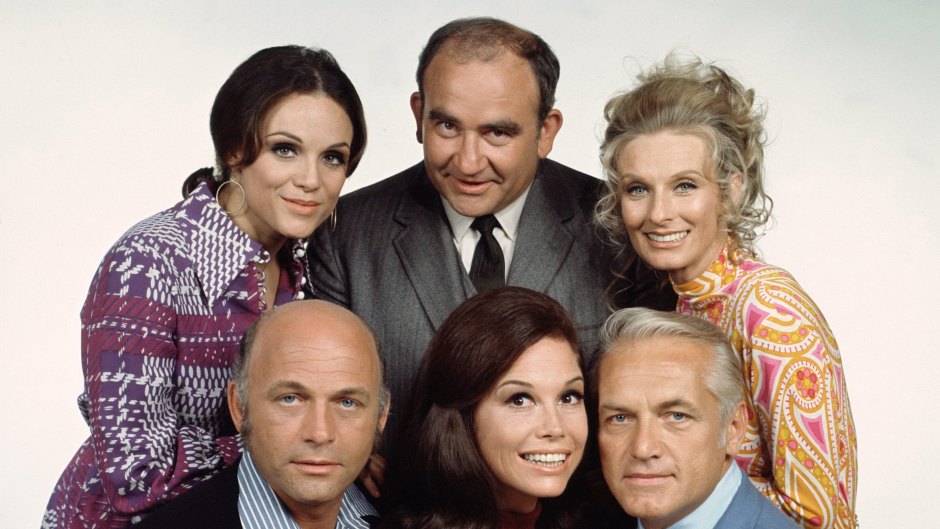
Getty Images
Meet the Ed Asner You Didn’t Know as He Looks Back at ‘Mary Tyler Moore,’ ‘Up’ and So Much More
If you were to look back at Ed Asner‘s acting career, there would be few who would argue that his greatest success — both critically and from the audience’s point of view — came from the years he spent playing newsman Lou Grant on the Classic TV series The Mary Tyler Moore Show and the character’s self-titled dramatic spinoff, which ran collectively from 1970-82. By anybody’s standards, that’s one hell of a run. While he may not have achieved that sort of sustained success again, this is a guy who’s still working all these years later. And at the age of 89, that is an accomplishment deserving of respect.
“Well, I’ve got to pay off my bills,” he exclusively tells Closer Weekly in a voice that still resonates his most famous character. “I hit a dry spell when I first started out. I used to get the Los Angeles Times on Saturday night to look at the Want Ads for Sunday. I never could find anything else that I was suited for, and I didn’t have the adequate preparation to apply for the jobs, so I limped on until I finally began to make some money — and I haven’t had to go back to the Want Ads yet.” He pauses a moment before letting out an ironic laugh, “I’ve just been around too long for people to avoid me.”
Please scroll down for so much more of our interview with Ed Asner.
1 of 21
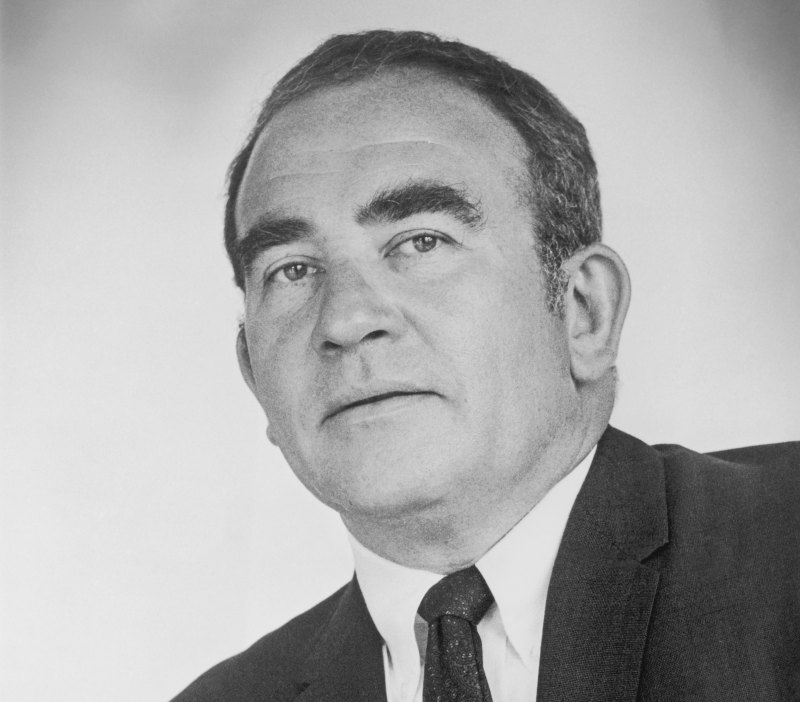
Getty Images
From Yitzhak to Lou Grant
His journey began on November 15, 1929, when Ed was born Yitzhak Edward Asner in Kansas City, Missouri, to Jewish Russian-born parents Lizzie and Morris David Asner. She was a housewife while he ran a second-hand shop, and Yitzhak (who would obviously shorten his name to Ed) attended Wyandotte High School in Kansas City, Kansas, and the University of Chicago. An early occupation was on the General Motors assembly line, before serving with the U.S. Army Signal Corps, appearing in plays that toured European army camps. Returning home, he joined Chicago’s Playwrights Theatre Company, but decided to move to New York City. There he appeared in an Off-Broadway revival production of Threepenny Opera, before costarring with Jack Lemmon in Broadway’s Face of a Hero in 1960. Making his TV debut in a 1957 episode of Studio One, he began guest starring on a variety of TV shows from the era, among them The Outer Limits, Voyage to the Bottom of the Sea, Decoy, and The Outlaws among others. In between, in 1962, he was on the big screen in Elvis Presley’s Kid Galahad, appearing in eight others prior to the debut of The Mary Tyler Moore Show. It wasn’t always easy, but he continually pushed himself forward.
2 of 21

AP/Shutterstock
“Once I chose acting,” he offers matter of factly, “it commanded me. It became my life. I could list the gutter as my residence, but I had to stay acting. There was always something in me that needed that.”
At which point Ed startled me by turning the tables and asking how long I’ve been an entertainment journalist. Responding that I’d started in the ’80s with my first paid gig, he smiled and said, “Well, congratulations. You’ve got that same compulsion, don’t you? If you love what you’re doing, you’d shove anyone in the gutter if they tried to stop you.”
3 of 21

Getty Images
Just as nothing could stop him. “I started as an amateur, naturally,” he explains, “and the jobs would materialize. Then when I turned pro, they came with regular delivery. Only after I’d been going for a while did I hit that dry spell, which lasted for a couple of years. I mean, I could call what I’m going through now a dry spell, but it’s a dry spell of a different nature. It’s not doing a whole series, it’s doing singles. It’s doing guest shots. It’s without the guarantee of permanence.”
But would he want that sort of pressure at this stage of his life? “Hell yeah, and I could tell all the other things to go to hell,” though, he adds with a chuckle, “It would be a long time before I did that, because I would keep trying to crowd in whatever came in. You know, make everybody happy.”
4 of 21

Getty Images
Ed certainly did that when he became a part of the ensemble of The Mary Tyler Moore Show. That Classic TV sitcom played a significant role in the history of television by introducing a different kind of woman to the workplace comedy in the form of Mary Tyler Moore‘s Mary Richards. The setup is that, following a broken engagement, Mary Richards is looking for a new start, coming to Minneapolis for a secretarial position at TV station WJM, but finding herself made associate producer of the the station’s Six O’Clock News. There she would interact with, among others, her boss, Lou Grant, news writer Murray Slaughter (Gavin MacLeod), their dope of an anchorman, Ted Baxter (Ted Knight); and “Happy Homemaker” Sue Ann Nivens (Betty White, in a role fans of The Golden Girls would actually be shocked by). The show would also focus on Mary’s home life in terms of dating as well as living in a third-floor studio apartment in a 19th century house, where she would interact with neighbors Phyllis Lindstrom (Cloris Leachman) and Rhoda Morgenstern (Valerie Harper), who would become her best friend. That balance of work and home life, while building her career and gradually earning respect as a female news producer, simply hadn’t been done before.
5 of 21

Getty Images
“We loved each other,” Ed says of his costars. “We forgave each others’ faults and we stayed a family for many years, though eventually the taffy finally snapped.” Queried as to what caused the break in that “taffy,” he shrugs, “I dunno. It’s a phrase I just made up. We just pulled and pulled and pulled, and finally the taffy snapped and we all went our own ways. But the loyalty and dedication to each other was always there.”
6 of 21

Getty Images
During its seven-year run, the series took home a total of 29 Emmy Awards, including three for Outstanding Comedy Series, three for Mary Tyler Moore for Outstanding Lead Actress in a Comedy Series, and three for Ed in the category of Outstanding Supporting Actor in a Comedy Series. (He would win a total of four others, two of them for the Lou Grant spinoff.)
7 of 21

Getty Images
“Yeah,” he offers, “that show definitely had the stamp of approval. It was a good show. I can remember when we first started out and the rest of the cast, the other guys, were saying ‘Will we make it? Will we make it?’ What I said is, ‘I don’t give a s–t. If I just keep doing scripts this good, that’s all I care about. Whether they cancel us or not isn’t important. The fact that we’ve got this good stuff to do is all that matters.’ I think that quality work is more important than anything. People talk about the show in terms of a revolution for television, but I didn’t think in those terms. It’s just that it was well done. You just need to do good work. Of course, you never know that so much as when you’re doing good stuff and then that’s over. Then the s–t comes in.”
8 of 21

Getty Images
Before that happened, though, the end of The Mary Tyler Moore Show (which producers insisted on due to sliding ratings in season 7 and wanting to avoid damaging the show’s reputation), provided him with the opportunity to continue his character in the aforementioned Lou Grant, which took the character from its 30-minute sitcom origin and transported him to a 60-minute drama. In the show, Lou, following being fired along with the rest of the WJM staff (except, ironically enough, Ted Baxter) at the end of The Mary Tyler Moore Show, moves from Minneapolis to Los Angeles. There he returns to his newspaper roots and becomes city editor of the fictional Los Angeles Tribune, overseeing a staff that includes reporters Joe Rossi (Robert Walden) and Billie Newman (Linda Kelsey), and working alongside managing editor Charles Hume (Mason Adams) under publisher Margaret Jones Pynchon (Nancy Marchand). The show was created and produced by Mary Tyler Moore‘s Allan Burns and James L. Brooks, along with M.A.S.H.’s Gene Reynolds.
9 of 21

Getty Images
“I grudgingly accepted this new ensemble,” he admits. “I was looking to see how merited they were, and as time went on, I realized that each in their way was as valuable, if not more so, than anyone on The Mary Tyler Moore Show. When you look at the cast of Lou Grant, it was a brilliant ensemble. Bobby Walden was perfect, Linda Kelsey became the belle ideal, Nancy Marchand was the best actress in the country [and] Mason Adams was perfect. It very quickly felt like home again, and I was very proud of their work. They, in their own way, was achieving a perfection that was equal to the Mary Tyler Moore cast at least.”
10 of 21

Getty Images
Of the character himself, Ed notes, “I very much felt a connection with Lou Grant, and I based him very much on my two older brothers on the comedy. I regarded them as clowns. But when I started to do the hour show, that particular well wasn’t working for me. I found that I couldn’t come up with what I needed, so then I reverted more to yours truly and used the sadder part of my nature. My somber self. My sad-sackedness. At least I used to be; not sure if I still am, because people even find my anger funny these days. But there were all kinds of overlaps of the character between the two shows. I won’t say that it was a total erasure and reinstallation, but I had to think it out better, think it out more, because it wasn’t a situation where I could depend on the jokes.”
11 of 21

Getty Images
Making that shift was fine with him, he says, because “I trusted the two producers so implicitly. I guess I was kind of surprised that they would relegate this comedic character to an hour show, but the interesting thing about that is that we were going from a half-hour audience show with laughter involved, to an hour show with no laughter. It was a drama, but there was still laugh lines within the context of the show. The show debuts in the fall, and I was in therapy at the time. On my visit to the therapist after the show opened, I said, ‘What did you think?’ He never spoke much, but he did say, ‘Why do you grimace so much?’ And it hit me like a sledgehammer. On the comedy, every time we had a potential laugh line, I grimaced. That was my key to the audience, ‘This is a laugh line. You can laugh at home.’ Of course I stopped, but what a schmuck.”
12 of 21

Moviestore/Shutterstock
Whereas Mary Richards represented the change of women’s role in the workplace, Lou Grant was an opportunity to deal with a wide variety of current issues. Says Ed, “We had homelessness, unemployed Vietnam veterans, black veterans, electronic speed to get the news out, judging news in a different way than the traditional way, nepotism… There wasn’t a thing we didn’t touch, I said at the time, other than, you know, school busing — which was a hot topic — abortion and gun control. They turned out to be things that we couldn’t touch.”
13 of 21

Moviestore/Shutterstock
As is well known, Ed has involved himself in a wide variety of charitable efforts and activism designed to help others, and the question is whether or not the writers of Lou Grant were inspired by him, or if he was inspired by the topics covered by the show. “I don’t think they attempted to take my lead, although I was happy to take theirs,” he says. “But [CBS] ended up canceling the show, because it got too political for them and I, in my personal life, got too political for them. It just became one of the shows to get its wings clipped by the network. You know, when they came forward with the proposal for The Mary Tyler Moore Show, they had written her as having been divorced and the network said, ‘No!’ So it was an engagement that was broken off, not a marriage. That was another idea they weren’t ready for; you didn’t find divorced people on primetime TV. Now, of course, you’ve got The Walking Dead... Same thing.” Ouch.
14 of 21

Getty Images
Life Outside the Newsroom
In the years between The Mary Tyler Moore Show and Lou Grant, he appeared in a number of TV movies, six films, and the miniseries Rich Man, Poor Man and Roots, on which he played Captain Thomas Davies. In 1984, he was a series regular on the comedy Off the Rack, of which he says, “Unfortunately there was a writers strike going on at the same time and we only did six episodes, so it got nowhere. But it had a chance. Eileen Brennan and me, and Dennis Haysbert were on that, and a good kid actor. It was funny and well-written, but they didn’t give it a chance.”
15 of 21

Paramount Tv/Kobal/Shutterstock
After that, it was back to guest starring roles until 1987, when he shot 21 episodes of The Bronx Zoo, created by Family Ties‘ Gary David Goldberg (who had been a producer on Lou Grant). It was a drama set at an inner city high school located in the Bronx, New York, and saw Ed cast as Principal Joe Danzig, who tries to maintain hope despite the pessimism of their environment. “That was a show that dealt with issues,” explains Ed, “and it had good people involved. The Reikers [Donald Reiker and Patricia Jones] were a husband and wife team who produced it, and they fought for it. But Gary David Goldberg was the executive producer. He could have exercised more clout than he did, but he didn’t do it and it was eventually canceled.”
16 of 21

Mtm Enterprises/Kobal/Shutterstock
In 1991, he costarred in the Sharon Gless series The Trials of Rosie O’Neill, and the following year had a recurring role on the John Ritter/Markie Post comedy Hearts Afire, the memory of which seems to aggravate him. “That wasn’t much fun,” he says. “We’d get before our [studio] audience and we’d do the show. Then the producer, Linda Bloodworth-Thomason, would send down pages of dialogue for them to continue filming. The audience would have gone home by then, and the actors were uncomplaining. John and Markie dutifully did their work, but I came to resent it highly. It didn’t affect me, they were the ones that had to learn all the lines, but it bothered me that we’re filming in front of an audience that no longer existed. They had to carry on without them, and I didn’t like it.”
17 of 21

Snap Stills/Shutterstock
Thunder Alley was a sitcom that aired on ABC for one season from 1994-95, casting Ed as a retired race car driver; while the 10-episode 1998 comedy The Closer paired him up with Tom Selleck in an advertising agency; 2004’s Center of the Universe (which lasted 12 episodes) was a comedy in which he starred with John Goodman; and Michael: Every Day was a Canadian sitcom he costarred in back in 2011. And then there were many films that he appeared in, including playing Santa in 2003’s Elf. Between all of that, he began doing voice work, taking on characters in a wide variety of animated series, from superhero adventures to twisted comedies. But his greatest opportunity regarding voice work was Pixar’s Up, in which he played widower Carl Fredricksen, who goes on the adventure of a lifetime — learning to truly live again — with a kid who suddenly enters his life.
18 of 21

Getty Images
“I was submitted through normal channels, and the two producers were up in Pixar country,” Ed recalls. “I was doing a reading of a single-character play called Numbers of People, about the Holocaust, which I was doing at the Alameda Country Jewish Senior Center. Unbeknownst to me, those two producers came and saw me do this reading of this Holocaust play, and they cast me from that in Up. I had done cartoon voices all over the place, but this was the first time I did a feature. So I’m busy doing it, and on the fourth or sixth session, the animators sent word to the producers that they were quite pleased with the choices I was giving them, which made me happy. Then, on the sixth or eighth session, we were scurrying back from lunch to do the session. There was a little lighted curb in the room that I didn’t notice. I tripped over it as we came rushing in, and I went crashing against a wall, into a corner that was laced in iron, and split the back of my head open. I saw stars and all that, and was bleeding pretty good, so they took me to St. Joseph’s Hospital, put in about six or more staples, then I came back and did the day’s work. Probably some of the best work I ever did, and that’s the story of my voice-over.”
19 of 21

Getty Images
“I just think it was the perfect match of character and actor,” he adds. “Think about it: I’m grumpy, I’m old, I’m alone. It is the perfect wedding. And I love little kids. I love to watch them and imitate them if I can. And, of course, I love animals, and Up was filled with all of that. And it had the greatest love story ever. I actually call it a double love story, first his wife, Ellie, and then he comes to love the kid.”
If there was any disappointment that came from Up, it’s the fact that it was not something he was able to parlay into further animated features. “I love doing voice work,” he says, “and it pisses me off that I don’t get the calls now. After Up, it was like I died and went to heaven or something.”
20 of 21

Getty Images
Nope, Ed just kept plugging away, not only with acting performances, but fighting for his political beliefs and working alongside a number of charities. He is also a parent and grandparent of children with autism, and has been extremely involved with the nonprofit Autism Speaks. His reason for getting involved in all of this? “There’s a great deal of injustice in the world,” he notes. “I like to call out injustice and remark on it when I see it, and it’s very easy to see. And easy to open your mouth, though not a lot of people are willing to, because there are reprecussions for that, which I found out with Lou Grant. But after I stumbled through that disaster, I figured the damage was done, so I might as well continue the performance. I don’t lead cavalry charges down Pennsylvania Avenue, but I’ll make comments, And with the president we’ve got now, how can you notcomment on this evil? It’s an unbelievable aberration. And it’s not because of him, it’s what he represents — that enormous core of self-seeking, discriminating, angry, racist people in the United States.”
21 of 21

Getty Images
And yet he keeps going, currently working on his biography and, at the time of our conversation, preparing to reprise his one-man show in Chicago and Des Moines, Ed Weinberger‘s A Man and His Prostate. The mature side of this journalist let out a chuckle at the title, to which Ed comments, “You’re laughing at the title of my play?” Awkward? Not at all. “We’ve had great success with it. It deals with Weinberg’s attack of prostatitis on a cruise ship to Italy. It’s funny and at the same time informing. I just love the show, and the bonus is it brings some money in. Not surprisingly, I’m in debt and want to get it paid off. Plus the show makes people happy.”
Just as they’re undoubtedly happy about the fact that Ed Asner’s career continues some 60-plus years after it began, which is not something a lot of people can say. Ed’s feeling about it? In a comment that should be the title of his biography, he exclaims, “I’m delighted I got through most of it with my clothes on.”






